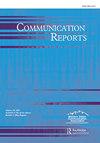终身看电视透过培养内隐规范影响种族偏见:不同人生阶段的影响不同
IF 1.6
Q3 COMMUNICATION
引用次数: 0
摘要
本研究调查了终身电视(TV)使用和在生命阶段(即童年、青春期、成年期)使用电视对种族态度的作用。在一个年轻的成年人样本中(N = 268),终身看电视与种族态度没有直接或间接的联系。然而,当测试电视使用在特定生命阶段的影响时,儿童、青少年和成年时期的电视使用都通过隐含测量的规范和避免种族主义的动机与当前的种族态度间接相关。总的来说,童年和成年看电视与强烈的种族主义有关,而青少年看电视与较弱的种族主义有关。讨论了今后的研究方向。本文章由计算机程序翻译,如有差异,请以英文原文为准。
Lifetime TV Use Influences Racial Prejudice Through Cultivating Implicit Norms: Differed Effects Across Three Life Stages
The present study investigated the role of lifetime television (TV) use and TV use across life stages (i.e., childhood, adolescence, adulthood) on racial attitudes. In a young adult sample (N = 268), lifetime TV use was not associated with racial attitudes either directly or indirectly. However, when testing the effects of TV use across specific life stages, TV use during childhood, adolescence, and adulthood were each indirectly associated with current racial attitudes through implicitly measured norms and motivation to avoid racism. Overall, childhood and adulthood TV use was associated with stronger racism, whereas adolescence TV use was associated with weaker racism. Directions for future research are discussed.
求助全文
通过发布文献求助,成功后即可免费获取论文全文。
去求助
来源期刊

Communication Reports
COMMUNICATION-
CiteScore
3.70
自引率
0.00%
发文量
18
期刊介绍:
Communication Reports (CR), published biannually since 1988, is one of two scholarly journals of the Western States Communication Association (WSCA). The journal publishes original manuscripts that are short, data/text-based, and related to the broadly defined field of human communication. The mission of the journal is to showcase exemplary scholarship without censorship based on topics, methods, or analytical tools. Articles that are purely speculative or theoretical, and not data analytic, are not appropriate for this journal. Authors are expected to devote a substantial portion of the manuscript to analyzing and reporting research data.
 求助内容:
求助内容: 应助结果提醒方式:
应助结果提醒方式:


